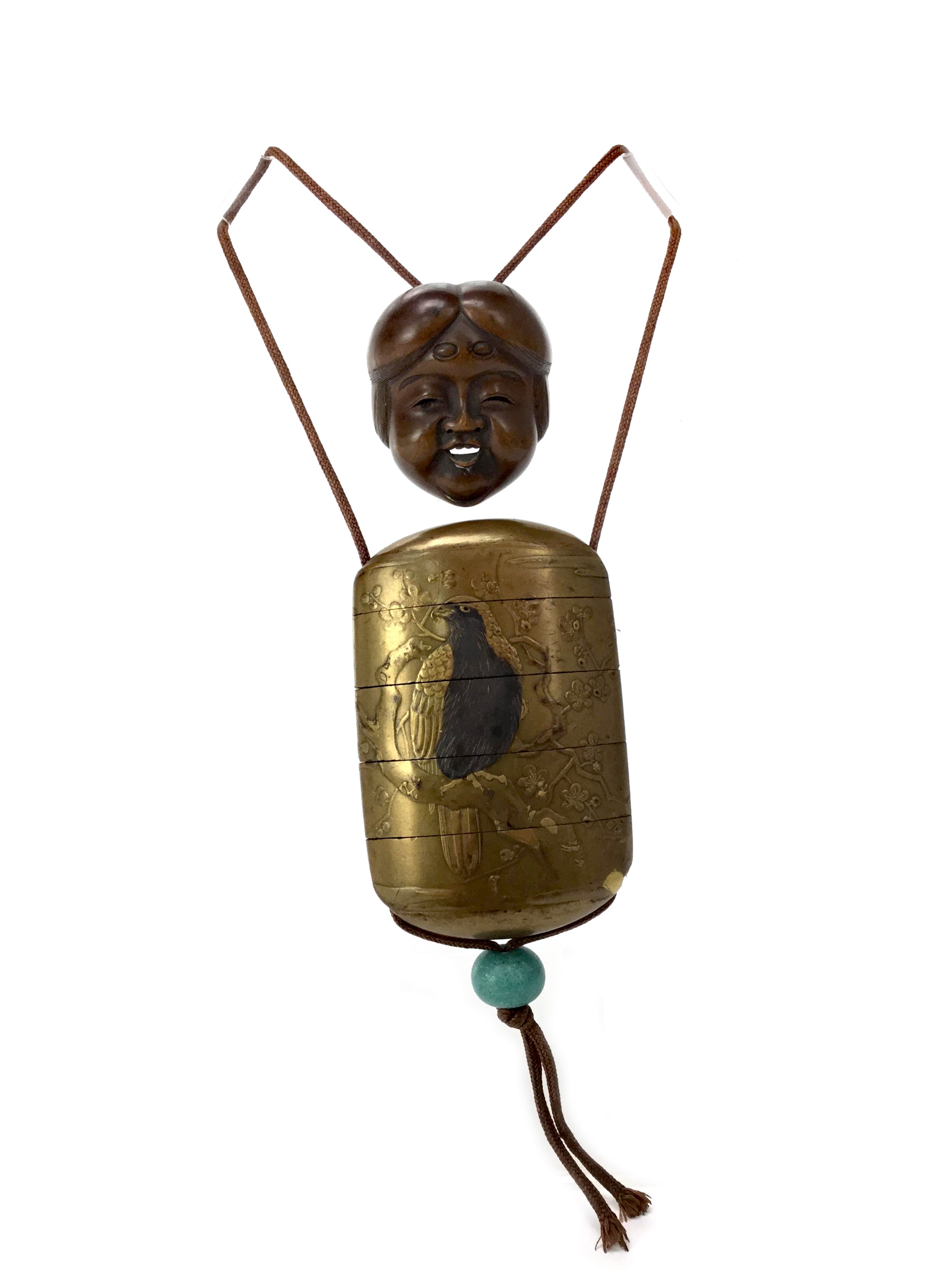Functional Beauty
An inro is a decorative case or container that traditionally hung suspended from an obi, the sash worn around the waist in Japan. At the end of the 16th century, men required a pouch for medicines, seals, tobacco, even a small writing brush and ink. The inro took shape as a functional object and, in true Japanese fashion, soon became a thing of beauty, an opportunity for artistic expression.
In Edo period Japan, wealthy merchants as well as samurai and aspiring gentlemen chose highly decorated and detailed inro, made from very thin leather, wood or paper covered in decorated lacquer. As the technique developed from the late Edo period to the Meiji period and the artistic value of the inro increased, it was no longer regarded only as an accessory; it came to be regarded as an object of art object, that could be collected and admired.
An inro consists of a stack of small nested boxes, held together by a cord that is laced through cord runners down one side, under the bottom, and up the opposite side. The ends of the cord are secured to a netsuke, a kind of toggle that is passed between the sash and pants and then hooked over the top of the sash to suspend the inro. An ojime bead on the cords between the inro and netsuke hold the boxes together. This bead is slid down the two suspension cords to the top of the inro to hold the stack together while the inro is worn, and slid up to the netsuke when the boxes need to be unstacked to access their contents. The ojime and netsuke also evolved over time from strictly utilitarian articles into objects of art and craftsmanship.
Inro were often decorated with figures and figural scenes of reading, calligraphy, dramatic arts, as well as animal subjects such as monkeys, lions and rats, birds and butterflies. The Asian Works of Art Auction on 16 July features a lovely 19th century inro (lot 703). The four case inro in sumptuous gold lacquer depicts a bird on branch to one side, and on the other a bird in flight amongst blossoming branches, with mask formed netsuke. Estimated at £300-400, it is sure to spark the interest of collectors and enthusiasts alike.
Click here to view full auction. >>
Magda Ketterer
The next Asian Works of Art Auction takes place on 8 October; entries are invited for this international auction. For a complimentary valuation please contact specialist Magda Ketterer on 0141 810 2880 or magda@mctears.co.uk.
What's it worth?
Find out what your items are worth by completing our short valuation form - it's free!
